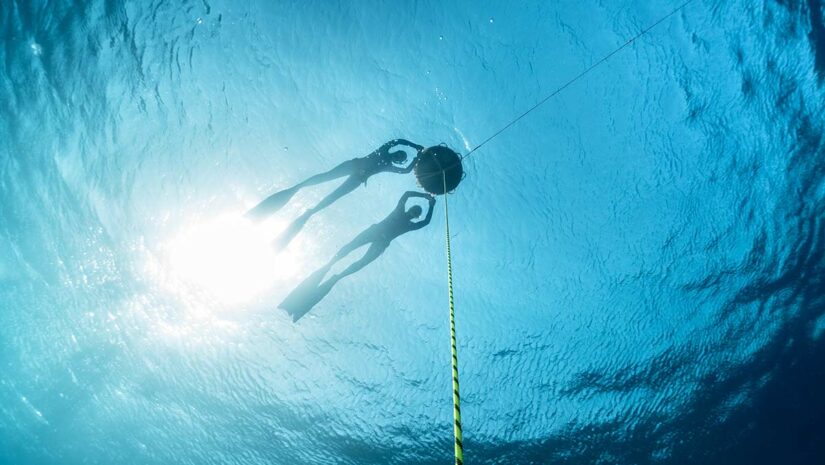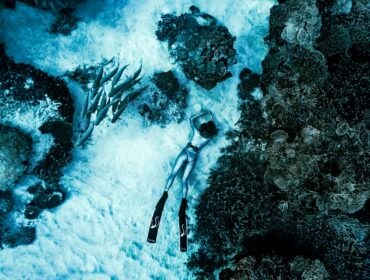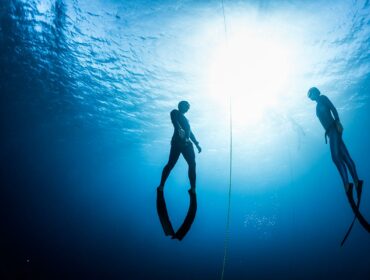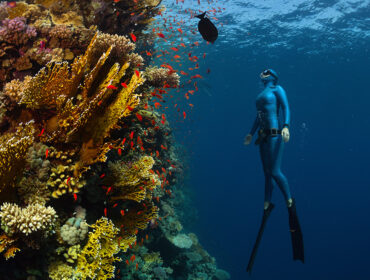You have likely noticed that all the deepest freedivers wear nose clips instead of a mask. For people who have never used one, a freediving nose clip can seem like a strange choice. After all, the sense that humans rely on above all others is sight. And since nose clips can be paired with goggles — though often aren’t — you’ll need to consider how you incorporate nose clips into your gear.
Benefits of the Freediving Nose Clip
Equalization
The limiting factor when trying to dive deeper for most freedivers is equalization. We only take with us as much air as we can fit into our lungs on the surface. We need this air not only to power our body, but to equalize our ears.
Air is in short supply on a deep dive, so any way to avoid losing air is going to help us to equalize deeper. What freedivers have come to realize is the mask may be a “waste of air” and the nose clip is a simple solution.
The mask needs to be equalized, or you will have mask squeeze (some burst blood vessels in the eyes). It needs to be equalized numerous times on a single dive. Things become even trickier when a diver is below their residual volume and air is hard to find or limited, depending on your equalization method.
Wearing a nose clip means you are conserving your air in the most efficient manner.
There is also the added benefit of not having to think about equalizing the mask. I used the mask until I was diving to 210 feet deep (70m) and, after switching to a nose clip, I noticed how much simpler it made equalization. Wearing a nose clip means there is one less thing to think about, or potentially mess up — and in freediving, that is always a good thing.
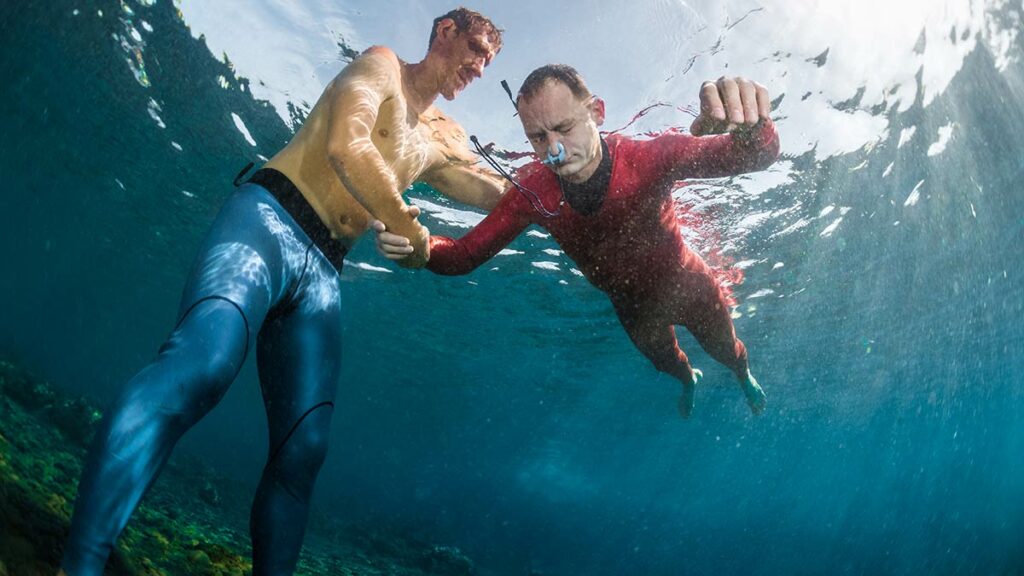
Efficiency
The nose clip will affect streamlining on the descent (as long as you are not hands-free). Having to keep a hand on the nose creates more drag through the water, and surely affects your efficiency and relaxation.
This is amplified in Constant Weight No Fins and Free Immersion as you need to pause for a moment to squeeze your nose before taking the next pull.
The efficiency aspect might not be important if you are happy staying around the same depths. But if you decide to train to get deeper, a big part of that journey is becoming as efficient as possible. Many of the changes you will have to make will take hours of training in comparison — switching to a nose clip is a quick way to make some big gains.
Relaxation
It may seem strange to hear this, but once divers go through the process of becoming accustomed to diving with a nose clip, almost all of them find it more relaxing than diving with a mask. Surely the benefits already mentioned contribute to this, but there is something more than those alone.
Maybe it is the sensation of water moving over the face. Perhaps losing most of our sight heightens our other senses and allows us to zone into the pleasurable feelings of moving and falling through the water. Whatever it is, there is a reason almost no one switches back to diving with a mask.
When should you make the switch to nose clips?
Most of us get into freediving to be able to explore the underwater world, or to spearfish. Both of these activities require you to wear a mask. Also, if you plan to train on the line, you will be doing safety for your buddies. This also requires you to dive with your mask.
It is important to get used to diving with a mask. For example, I would never recommend a diver to begin freediving with a nose clip.
If you are thinking about making the switch to diving with a nose clip, first ask yourself if you have reached the depths you need to with a mask. For example, if you plan to become an instructor, you will need to be able to easily reach 130ft (40m) with a mask. If you have reached the depths that you need to with a mask, then switch to a nose clip. If not, keep training with a mask.
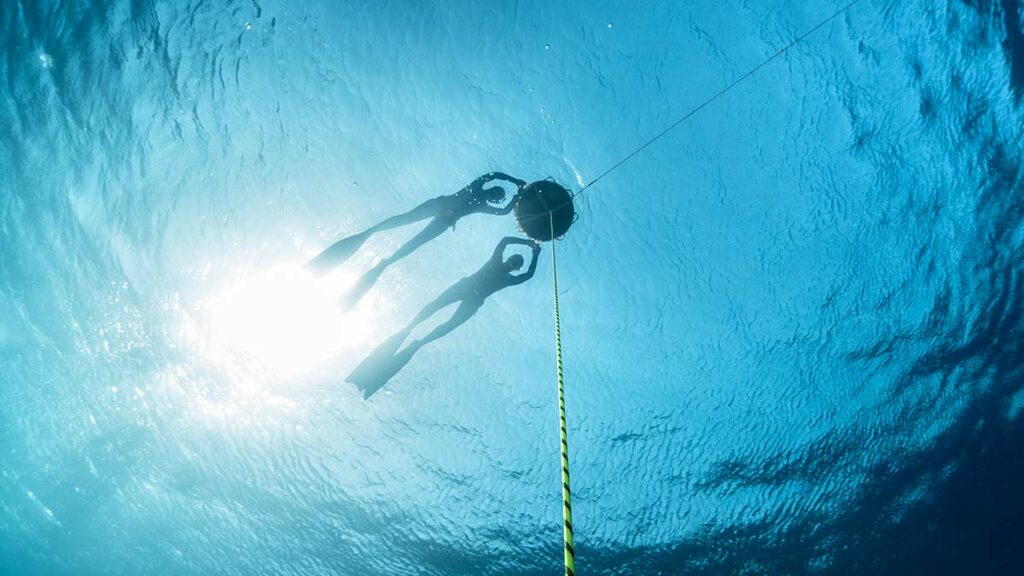
Finding the perfect nose clip fit
Finding the perfect fit is very important. If the nose clip doesn’t seal properly, it will leak air, and all that air you should be saving will be floating back up to the surface.
Finding the right one for you will take some experimentation. It is best if you can try before you buy, but if that is not possible, the general rule of thumb is to get a big nose clip if you have a bigger nose and a small nose clip if you have a smaller nose.
You can usually make any clip work for you with a little practice and patience.
Top tips for wearing a nose clip
- Make sure there is no grease, oil, or sunscreen on your nose. Rub your nose with your wetsuit or the loose dive line before applying your nose clip. Otherwise, it will slip off
- It needs to be tight. Most people don’t tighten the nose clip enough at first. Hold the clip at the end of the arms (furthest from the nose) and squeeze until you can’t close it anymore. It should be slightly uncomfortable.
- Play around with exactly how you fit it to the nose. Different people find it works in different spots. But once you find your spot, always put it there.
- Start with shallow dives. Don’t put on the clip and expect to love it right away. Ease yourself into it gently over a few sessions.
- After you fit the nose clip, do a strong equalization and hold the pressure. If you feel any air escaping, then you need to change something until no air escapes.
I hope this has been informative and helps you to make a smooth transition into diving with a nose clip.

